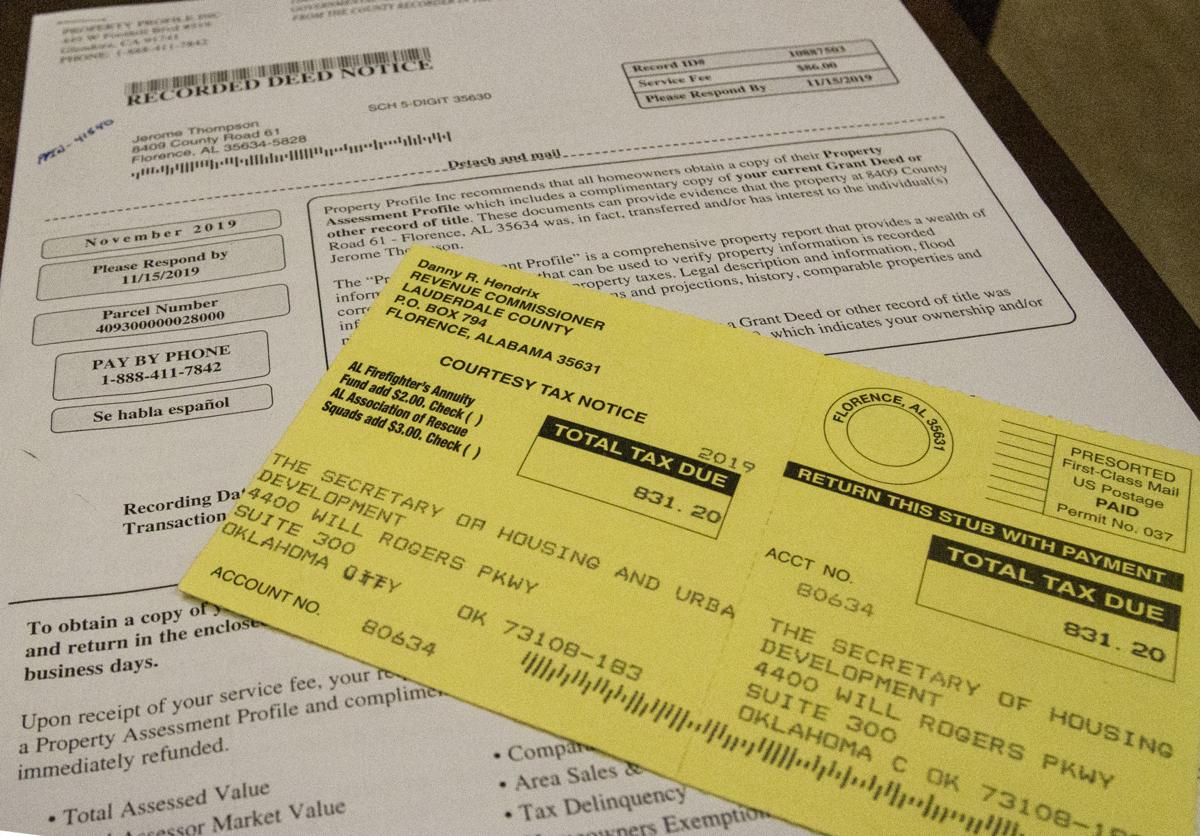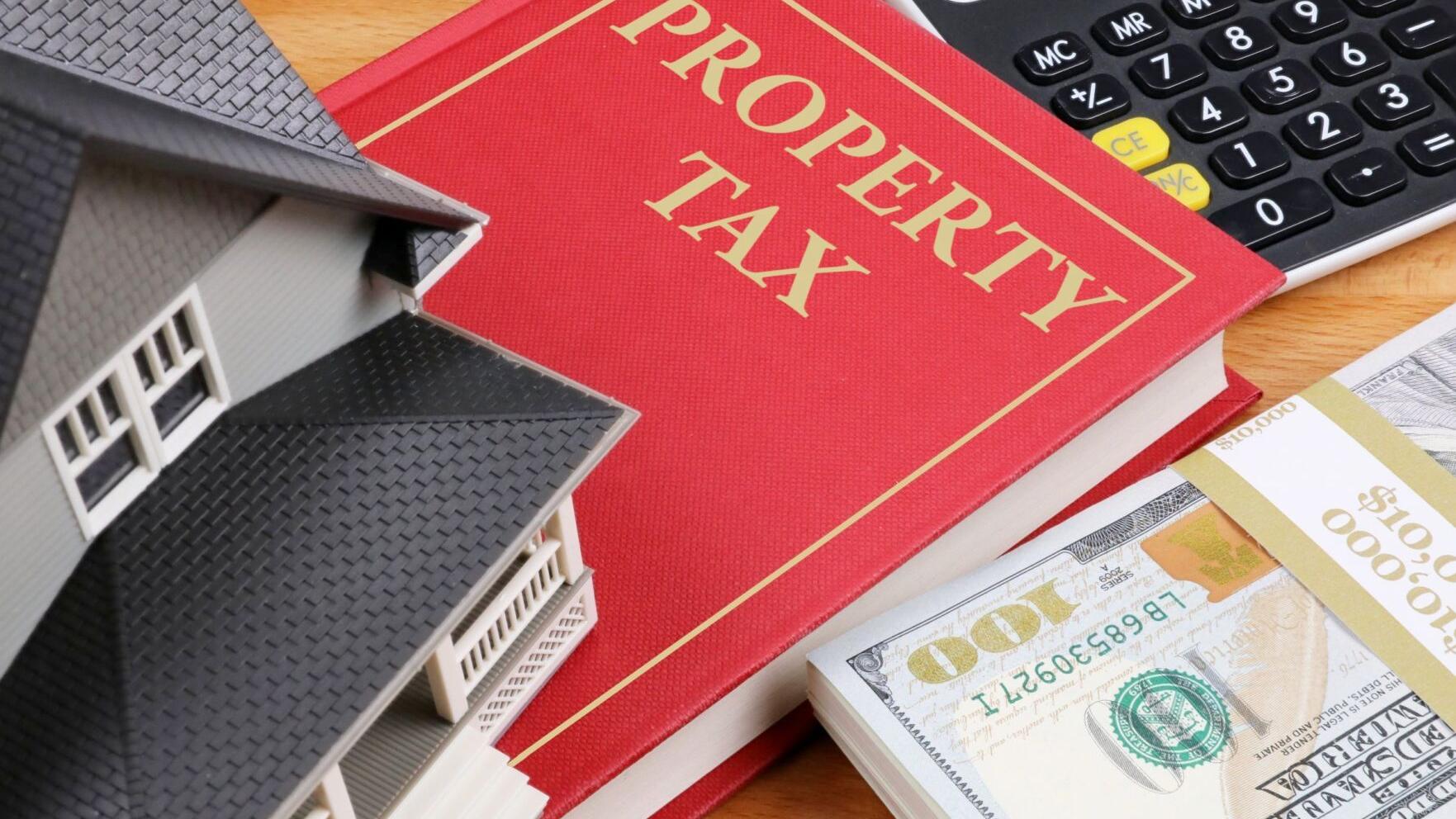Home>Home Maintenance>How To Calculate Aggregate Blended Levels Of Property Assessment In Cook County


Home Maintenance
How To Calculate Aggregate Blended Levels Of Property Assessment In Cook County
Modified: March 6, 2024
Learn how to calculate aggregate blended levels of property assessment in Cook County. Expert tips and guidance for home maintenance to help you maximize your property's value.
(Many of the links in this article redirect to a specific reviewed product. Your purchase of these products through affiliate links helps to generate commission for Storables.com, at no extra cost. Learn more)
Introduction
When it comes to home maintenance, understanding property assessment is crucial. It not only helps homeowners assess the value of their property accurately but also determines the amount of property tax they will be liable for. In Cook County, Illinois, property assessment plays a significant role in determining property tax bills. To have a comprehensive understanding of property assessment, it is essential to delve into the concept of aggregate blended levels.
Aggregate blended levels refer to the ratio of assessed value to market value of a property in a particular area. This measure indicates how accurately properties are assessed in Cook County compared to their actual market value. Calculating aggregate blended levels can shed light on the overall fairness and accuracy of the property assessment system.
Understanding the factors that affect property assessment levels is crucial. Factors such as location, property size, age, condition, and recent sales data influence the assessed value of a property. However, these assessments are not static and can change over time. That’s where the concept of aggregate blended levels comes into play, providing an overall picture of property assessments in a given area.
Calculating aggregate blended levels involves a step-by-step methodology. This includes gathering property assessment data, obtaining the equalization factor, calculating blended assessment levels, and determining the aggregate blended levels. By following this process, property owners and stakeholders can have a clearer understanding of how properties in Cook County are assessed.
Let’s dive into each step of the methodology for calculating aggregate blended levels in Cook County, Illinois, and explore the benefits and limitations of this approach.
Key Takeaways:
- Understanding property assessment in Cook County is crucial for homeowners, as it determines property tax. Calculating aggregate blended levels provides insights into assessment accuracy and fairness.
- Factors like location, property size, and market conditions influence property assessment levels. Calculating aggregate blended levels helps identify potential disparities and drive improvements.
Understanding Property Assessment in Cook County
Property assessment is a vital component of the real estate market and plays a significant role in determining property taxes. In Cook County, Illinois, the assessment process is overseen by the Cook County Assessor’s Office. The primary objective of property assessment is to determine the value of a property for taxation purposes.
In Cook County, the Assessor’s Office is responsible for assessing the value of residential, commercial, and industrial properties. They use a variety of methods, including sales comparison approach, income approach, and cost approach, to arrive at a fair market value for each property.
Property assessments in Cook County are conducted on a periodic basis, typically every three years. However, it’s important to note that assessments can also be made in between those intervals if there are any changes, such as new construction or property renovations.
Once the assessment is completed, the assessed value of the property is used to calculate property taxes. The assessed value is multiplied by the local tax rate to determine the annual tax liability. This means that the accuracy of the property assessment directly affects the amount of property taxes homeowners and businesses will be required to pay.
While property assessments are generally conducted to reflect the fair market value of properties, discrepancies can occur. This is where the concept of aggregate blended levels comes into play – it provides a measure of how accurately properties are assessed in relation to their market value.
By understanding the property assessment process in Cook County and the significance of aggregate blended levels, property owners can have a clearer understanding of how their property values are assessed and how it may impact their tax obligations.
Definition of Aggregate Blended Levels
Aggregate blended levels refer to the ratio of assessed value to market value of properties within a specific geographic area, typically Cook County in this context. It is an important metric used to evaluate the accuracy and fairness of property assessments.
Assessed value is the value assigned to a property by the Assessor’s Office for taxation purposes. Market value, on the other hand, is the estimated value of a property based on current market conditions and comparable property sales.
The aggregate blended level is calculated by comparing the assessed value of properties to their market value in a given area. It provides insight into how well properties are assessed in relation to their actual market worth.
A high aggregate blended level indicates that properties are generally assessed close to their market value, suggesting a more accurate and fair assessment system. Conversely, a low aggregate blended level suggests a potential disparity between assessed value and market value, indicating a less accurate assessment process.
Monitoring aggregate blended levels is crucial to ensure that property assessments are conducted in an unbiased and equitable manner. It allows property owners, assessors, and local authorities to identify any potential issues with the assessment process and take necessary corrective measures.
It’s important to note that aggregate blended levels are typically calculated for specific geographic areas, such as neighborhoods or townships, within Cook County. This allows for a more localized assessment evaluation, acknowledging that assessment accuracy can vary from one area to another.
By understanding the definition and significance of aggregate blended levels, property owners and stakeholders can gauge the accuracy of property assessments in Cook County and work towards maintaining a fair and equitable property tax system.
Factors Affecting Property Assessment Levels
Property assessment levels are influenced by a variety of factors that can impact the assessed value of a property. Understanding these factors is essential for property owners and stakeholders in Cook County to comprehend how properties are evaluated for taxation purposes. Here are some of the key factors that affect property assessment levels:
- Location: The location of a property plays a significant role in its assessed value. Properties in desirable neighborhoods or areas with high demand tend to have higher assessed values compared to properties in less desirable or declining areas.
- Property Size and Features: The size of a property, including the land and building dimensions, can influence its assessed value. Additionally, features such as the number of bedrooms, bathrooms, and the presence of amenities like a swimming pool or garage can also impact the assessment level.
- Property Age and Condition: The age and condition of a property are important considerations in the assessment process. Newer properties or properties in excellent condition tend to have higher assessed values, while older properties or properties in need of repairs may have lower assessment levels.
- Comparable Sales: Recent sales data of similar properties in the area, known as comparable sales or “comps,” can significantly influence assessment levels. Assessors may use these sales to determine the market value of a property and adjust the assessed value accordingly.
- Local Market Conditions: The current state of the real estate market in the area can impact assessment levels. During periods of high demand and rising property values, assessments may be adjusted upwards. Conversely, in a declining market, assessments may be adjusted accordingly.
- Tax Incentives and Exemptions: Certain tax incentives and exemptions provided by local authorities can also affect property assessment levels. For instance, properties designated as historic landmarks may be eligible for tax breaks, which can impact their assessed value.
It’s important for property owners to be aware of these factors as they can influence the assessed value of their property and, consequently, their property tax obligations. By understanding the factors that affect property assessment levels, homeowners can ensure that their assessments are accurate and reflect the true value of their properties.
Methodology for Calculating Aggregate Blended Levels
Calculating aggregate blended levels involves a step-by-step methodology to determine the accuracy and fairness of property assessments in a specific geographic area. This methodology provides a comprehensive approach to evaluating the relationship between assessed values and market values in Cook County. Here are the key steps in the process:
- Step 1: Gathering Property Assessment Data: The first step in calculating aggregate blended levels is to gather property assessment data from the Cook County Assessor’s Office. This data includes the assessed values of properties in the target area.
- Step 2: Obtaining the Equalization Factor: The next step is to obtain the equalization factor, also known as the level of assessment. This factor is determined by the Illinois Department of Revenue and is used to bring assessed values in Cook County to an equalized level with market values.
- Step 3: Calculating Blended Assessment Levels: With the assessed values and equalization factor in hand, the next step is to calculate the blended assessment levels. This is done by multiplying the assessed values of individual properties by the equalization factor.
- Step 4: Determining Aggregate Blended Levels: Finally, to determine the aggregate blended levels, the blended assessment values of all properties in the target area are divided by the market values of those properties. The result provides the ratio of assessed value to market value, indicating the overall accuracy of the property assessments in that area.
The methodology for calculating aggregate blended levels allows property owners, assessors, and local authorities to assess the fairness and accuracy of the property assessment system in Cook County. By utilizing this methodology, potential disparities between assessed values and market values can be identified and addressed.
It’s important to note that calculating aggregate blended levels should be done on a periodic basis, taking into account any updates or changes in property assessments and market conditions. This ensures an up-to-date evaluation of property assessments within a specific geographic area.
By following this comprehensive methodology, stakeholders can gain valuable insights into the overall performance of property assessments and work towards maintaining a fair and equitable property tax system in Cook County.
Step 1: Gathering Property Assessment Data
The first step in calculating aggregate blended levels is to gather property assessment data from the Cook County Assessor’s Office. This data provides the foundation for evaluating the accuracy of property assessments within a specific geographic area.
The Cook County Assessor’s Office maintains a database containing the assessed values of properties throughout the county. This information is publicly available and can be accessed through the Assessor’s Office website or by visiting their office in person.
When gathering property assessment data, it’s important to focus on properties within the target area of interest. This could be a neighborhood, township, or any other defined geographic region within Cook County. By narrowing down the scope to a specific area, the calculation of aggregate blended levels becomes more localized and relevant to the region being studied.
To gather property assessment data, you will need to compile a list of properties within the target area along with their corresponding assessed values. This can be done by utilizing online databases, requesting data from the Assessor’s Office, or utilizing data services that provide access to property assessment information.
It’s crucial to ensure that the gathered data is accurate and up to date. Property assessments can change over time due to factors such as renovations, changes in market conditions, or reassessment cycles. Therefore, it is essential to include the most current information available to obtain reliable results.
During the data gathering process, it’s also important to consider any specific criteria or filters that may be relevant to the assessment evaluation. For example, you may want to focus on residential properties only or exclude properties with certain exemptions or classifications.
By gathering comprehensive and accurate property assessment data, you lay the groundwork for the subsequent steps in the process of calculating aggregate blended levels. This data will be used in conjunction with other factors to determine the fairness and accuracy of property assessments within the target area.
Once you have successfully gathered the property assessment data, you can proceed to the next step in the methodology: obtaining the equalization factor.
Step 2: Obtaining the Equalization Factor
In the methodology for calculating aggregate blended levels, the second step is to obtain the equalization factor, also known as the level of assessment. This factor plays a crucial role in bringing assessed values in Cook County to an equalized level with market values.
The equalization factor is determined by the Illinois Department of Revenue (IDOR) and is based on an analysis of property sales data and market conditions within Cook County. It aims to ensure fair and consistent property assessments across the county by adjusting assessed values to align them with market values.
To obtain the equalization factor, one can visit the website of the Illinois Department of Revenue or contact their office directly. The IDOR typically publishes annual equalization factors for each county in the state, including Cook County.
Once you have the equalization factor for the specific assessment year, it can be applied to the assessed values of properties within the target area. This will help bring the assessed values in line with the market values, allowing for a more accurate evaluation of property assessments.
It’s important to note that the equalization factor may vary from year to year, depending on changes in market conditions and property assessments. Therefore, when calculating aggregate blended levels, it’s essential to use the appropriate equalization factor for the specific assessment year being analyzed.
The equalization factor provides a standardized adjustment that helps compensate for disparities between assessed values and market values. By applying this factor, the evaluation of property assessments becomes more consistent and reflective of actual market conditions.
Obtaining the equalization factor is a crucial step in the methodology for calculating aggregate blended levels. It ensures that assessed values are adjusted to align with market values, providing a more accurate representation of the relationship between assessments and actual property values within the target area of analysis.
With the equalization factor in hand, you are now ready to proceed to the next step, which involves calculating the blended assessment levels based on the obtained data and the equalization factor.
When calculating aggregate blended levels of property assessment in Cook County, add up the total assessed value of all properties and divide by the total market value. Multiply by 100 to get the percentage.
Step 3: Calculating Blended Assessment Levels
In the methodology for calculating aggregate blended levels, the third step involves calculating the blended assessment levels. This step utilizes the gathered property assessment data and the equalization factor obtained in the previous steps.
To calculate the blended assessment levels, follow these key steps:
- Multiply Assessed Values by the Equalization Factor: Take each assessed value of the properties in the target area and multiply it by the equalization factor. This adjustment helps bring the assessed values in line with market values, providing a more accurate measure.
- Record the Adjusted Values: Record the resulting adjusted values after multiplying the assessed values by the equalization factor. These adjusted values reflect the blended assessment levels for each property in the target area.
The calculated blended assessment levels provide a more accurate representation of how the assessed values compare to the market values within the specified area. These levels take into account the adjustment provided by the equalization factor, allowing for a more standardized assessment evaluation.
By calculating blended assessment levels, you gain insights into the accuracy of property assessments in relation to market values. Higher blended assessment levels indicate a closer alignment between assessed and market values, signifying a more accurate assessment process. On the other hand, lower blended assessment levels may indicate potential disparities or inconsistencies in property assessments.
It’s important to note that the calculated blended assessment levels are specific to the target area under evaluation. This localized approach enables a more focused assessment analysis and consideration of unique characteristics within the area.
Once the blended assessment levels have been calculated for all properties within the target area, you can proceed to the final step in the methodology, which involves determining the aggregate blended levels by comparing these levels to market values.
Calculating blended assessment levels is a vital step in evaluating the fairness and accuracy of property assessments. It provides a more comprehensive understanding of how properties are assessed in relation to their actual market values, contributing to a more informed assessment evaluation.
Step 4: Determining Aggregate Blended Levels
In the methodology for calculating aggregate blended levels, the fourth and final step is to determine the aggregate blended levels. This step involves comparing the blended assessment levels calculated in the previous step to the market values of properties within the target area.
To determine the aggregate blended levels, follow these key steps:
- Obtain Market Values: Gather market value data for properties within the target area. This information can be obtained from various sources, such as property sales records, real estate market reports, or appraisals.
- Divide Blended Assessment Levels by Market Values: For each property, divide the blended assessment level (calculated in Step 3) by its corresponding market value. This will result in a ratio representing the assessed value to market value.
- Calculate the Average Ratio: Calculate the average ratio by taking the sum of the ratios and dividing it by the total number of properties within the target area. This average ratio represents the aggregate blended level for the area.
The aggregate blended level provides an overall measure of how accurately properties are assessed in relation to their market values within the specified area. A higher aggregate blended level suggests a more accurate and fair assessment process, indicating that properties are generally assessed closer to their market values. Conversely, a lower aggregate blended level may raise concerns about potential disparities or inconsistencies in property assessments.
It’s important to note that determining aggregate blended levels should be done on a periodic basis, taking into consideration changes in property assessments and market conditions. This allows for an up-to-date evaluation of assessment accuracy and fairness within the target area.
By determining aggregate blended levels, you gain valuable insights into the overall performance of the property assessment system within the specific geographic area. This information can be used to identify any potential issues or disparities and drive improvements to ensure a fair and equitable property tax system.
With the determination of the aggregate blended levels, you have successfully completed the methodology for calculating and evaluating property assessments in Cook County.
Example Calculation of Aggregate Blended Levels
To provide a better understanding of how aggregate blended levels are calculated, let’s walk through an example calculation using hypothetical data.
Suppose we are evaluating the property assessments in a specific neighborhood within Cook County. We have gathered the following data:
- Assessed value of Property A: $200,000
- Assessed value of Property B: $250,000
- Assessed value of Property C: $180,000
Next, we obtain the equalization factor for the assessment year, which is 1.05. We multiply each of the assessed values by the equalization factor to calculate the blended assessment levels:
- Blended assessment level for Property A: $200,000 x 1.05 = $210,000
- Blended assessment level for Property B: $250,000 x 1.05 = $262,500
- Blended assessment level for Property C: $180,000 x 1.05 = $189,000
Now, let’s assume we have the market values for these properties:
- Market value of Property A: $225,000
- Market value of Property B: $275,000
- Market value of Property C: $200,000
To determine the aggregate blended level, we divide each blended assessment level by its corresponding market value:
- Ratio for Property A: $210,000 / $225,000 = 0.9333
- Ratio for Property B: $262,500 / $275,000 = 0.9545
- Ratio for Property C: $189,000 / $200,000 = 0.945
Next, we calculate the average ratio by summing up the ratios and dividing by the total number of properties:
(0.9333 + 0.9545 + 0.945) / 3 = 0.9443
The resulting average ratio of 0.9443 represents the aggregate blended level for the neighborhood in question. This indicates that, on average, the assessed values are 94.43% of the market values within the neighborhood.
By examining this example calculation, we can see how the methodology for calculating aggregate blended levels allows for an evaluation of the property assessment accuracy and fairness within a specific area. It provides a quantitative measure of how well the assessed values align with the market values, aiding in ensuring a more equitable property tax system.
Benefits of Calculating Aggregate Blended Levels
Calculating aggregate blended levels offers several benefits for property owners, assessors, local authorities, and other stakeholders involved in the property assessment and taxation processes. Let’s explore some of these benefits:
- Evaluation of Assessment Accuracy: Calculating aggregate blended levels provides a quantitative measure of how accurately properties are assessed in relation to their market values. It helps identify any potential disparities between assessed values and market values, allowing for an evaluation of the assessment system’s accuracy.
- Detection of Assessment Discrepancies: By comparing the blended assessment levels to market values, any inconsistencies or outliers in property assessments can be identified. This aids in detecting potential errors or biases in the assessment process, leading to corrective measures.
- Drive for Fairness and Equity: The calculation of aggregate blended levels promotes fairness and equity in property assessments. It allows for a more objective evaluation of the assessment system, ensuring that properties are assessed uniformly, regardless of their location or other factors.
- Transparency and Accountability: The transparency provided by calculating aggregate blended levels enhances the accountability of the assessment process. Property owners and stakeholders can have more confidence in the fairness and accuracy of their assessments when there is a clear measure in place to evaluate them.
- Identification of Systemic Issues: Calculating aggregate blended levels helps identify systemic issues within the assessment system. It enables policymakers and assessors to identify trends or patterns that may be affecting assessment accuracy and make necessary adjustments or improvements to the system.
- Basis for Property Tax Reform: Aggregate blended levels serve as a foundation for property tax reform initiatives. The insights gained from these calculations can inform discussions and policy changes aimed at ensuring a more equitable and efficient property tax system.
- Empowerment of Property Owners: By understanding the blended assessment levels, property owners gain a clearer understanding of how their assessments align with market values. This knowledge empowers them to advocate for fair and accurate assessments and potentially challenge assessments if they believe they are unfairly assessed.
Ultimately, calculating aggregate blended levels contributes to a more transparent, equitable, and fair property assessment and taxation system. It helps ensure that property owners are assessed accurately, providing them with confidence in the fairness of the assessment process and promoting trust in the overall property tax system.
By utilizing this methodology, property assessment practices can be continuously improved, leading to a more accurate and fair evaluation of property values and property tax obligations.
Challenges and Limitations
While calculating aggregate blended levels provides valuable insights into the accuracy and fairness of property assessments, it is important to recognize and understand the challenges and limitations associated with this approach. Here are some key challenges and limitations to consider:
- Data Availability and Quality: The accuracy and reliability of the gathered property assessment and market value data can impact the validity of the calculations. Data discrepancies, incomplete records, or outdated information may lead to inaccurate results.
- Variability in Property Characteristics: Properties within a specific area can have diverse characteristics, such as size, condition, and amenities. Variability in these characteristics can influence the accuracy of blended assessment levels and make comparisons more challenging.
- Changing Market Conditions: Market conditions, including fluctuations in property values and sales activity, can impact the accuracy of aggregate blended levels. It is important to consider the timing of the assessment calculation in relation to market conditions.
- Misinterpretation of Results: Interpreting aggregate blended levels requires a thorough understanding of the calculation methodology and the context in which they are applied. The results should be carefully analyzed and interpreted to avoid potential misinterpretation or misrepresentation.
- Localized Assessment Variations: The assessment accuracy may vary within different areas of Cook County. Calculating aggregate blended levels at a broader geographic level may not capture the localized variations accurately, leading to a less comprehensive assessment evaluation.
- Limitation of Equalization Factors: The equalization factor is a crucial component in calculating aggregate blended levels. However, it is a generalized adjustment for the entire county and may not account for specific variations at the neighborhood or property level.
- Legal and Administrative Constraints: Property assessment practices and methodologies are governed by laws and regulations, which may impose constraints on the calculation and implementation of aggregate blended levels. It is important to ensure compliance with applicable legal requirements.
Despite these challenges and limitations, calculating aggregate blended levels remains a valuable tool for assessing the accuracy and fairness of property assessments. It provides a framework for evaluating the relationship between assessed values and market values, enabling property owners, assessors, and policymakers to work towards a more equitable property tax system.
It is crucial to approach the calculation of aggregate blended levels with awareness of the challenges and limitations, and to use the results as a starting point for further analysis, discussions, and potential improvements in the property assessment and taxation processes.
Conclusion
Calculating aggregate blended levels in Cook County provides a comprehensive approach to evaluating the accuracy and fairness of property assessments. By understanding the concept of aggregate blended levels and following the methodology outlined, property owners, assessors, and local authorities gain valuable insights into the assessment system and its impact on property taxes.
Throughout this article, we have explored the methodology involved in calculating aggregate blended levels. Starting with gathering property assessment data, obtaining the equalization factor, calculating blended assessment levels, and finally determining the aggregate blended levels, each step contributes to the overall understanding of assessment accuracy.
Calculating aggregate blended levels offers several benefits, including the evaluation of assessment accuracy, identification of disparities or errors in assessments, and the drive for fairness and equity in the property tax system. It promotes transparency, accountability, and empowers property owners to advocate for fair assessments.
However, it is essential to acknowledge the challenges and limitations associated with calculating aggregate blended levels. These include data availability and quality, variability in property characteristics, changing market conditions, and potential misinterpretation of results. Careful consideration and analysis are necessary to overcome these limitations and ensure accurate interpretation of the assessment evaluation.
In conclusion, calculating aggregate blended levels is a valuable tool in assessing the accuracy and fairness of property assessments in Cook County. It helps drive improvements to the assessment system, promotes equity in property taxation, and enhances trust and confidence in the property tax system as a whole.
By utilizing this methodology and being aware of its limitations, property owners and stakeholders can work towards a more transparent and equitable property assessment and taxation system, ensuring that each property is assessed accurately and fairly based on its market value.
Frequently Asked Questions about How To Calculate Aggregate Blended Levels Of Property Assessment In Cook County
Was this page helpful?
At Storables.com, we guarantee accurate and reliable information. Our content, validated by Expert Board Contributors, is crafted following stringent Editorial Policies. We're committed to providing you with well-researched, expert-backed insights for all your informational needs.














0 thoughts on “How To Calculate Aggregate Blended Levels Of Property Assessment In Cook County”